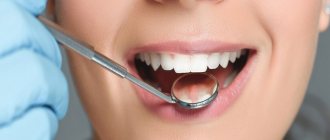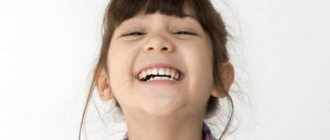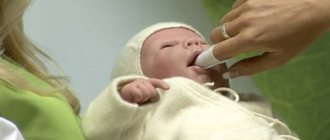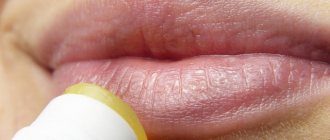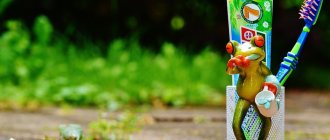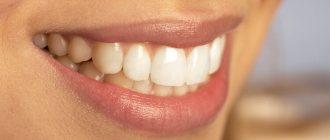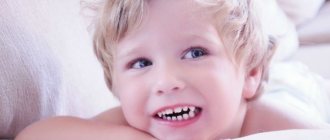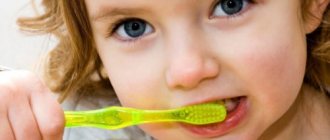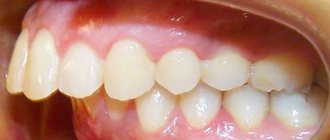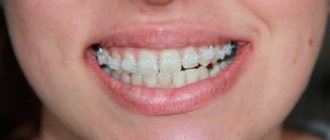One of the main areas of work of our clinic is child neurology, immunology and psychiatry. We work in constant contact with the parents of our young patients.
We work for you 7 days a week. Clinic specialists work closely with patients’ parents.
You can get a second online consultation with any doctor, even if you live in another city.
- Obsessive neuroses
- Hyperactive child and restless child. Increased excitability in a child
- Child rolling his eyes: psychological or medical problem?
- Increased anxiety in a child
- Increased fatigue. The child gets tired quickly
- Chin tremor in a newborn: the child's chin trembles
- The child does not sleep well at night, the child grinds his teeth (bruxism): a behavioral feature or a disease?
- Where to start and who to contact?
Obsessive neuroses
In most cases, the problem of obsessive-compulsive neurosis and tics is solved by play psychotherapy or a course of medical treatment, and most often by a combination of drug treatment and psychological work with suppressed nervous tension in the child.
Obsessive neuroses in children manifest themselves in the form of obsessive movements and thoughts. Obsessive states (obsessions) manifest themselves as irresistible and involuntarily arising thoughts, fears, and, as a result, obsessive movements.
Intrusive thoughts
- when a child fears for the health and safety of himself and his family
- constantly thinks or imagines that something bad might happen to them
- always remembers negative events that happened to him or his family in the past
Typical obsessive mental actions
- reading license plates, signs, operations with numbers and letters from license plates and signs
- counting lamp posts, houses, lawn fences, etc.
- constant search for “favorite” and “unfavorite” letters and numbers
Obsessive movements and actions.
The scope of their manifestations is very extensive. This could be a nervous tic in a child, or obsessive movements. The most typical obsessive movements and actions in children:
- biting nails and lips
- hair pulling
- thumb sucking, sucking or biting a pencil, pen, button, edge of clothing
- coughing, grunting, or making noises
- twitching of limbs
- blinking and/or stereotypic eye movements
- circling
- tapping, clapping
- rocking
- squatting, limping when walking
- rubbing the body or objects
- shaking and shaking hands and objects
- jumping and skipping for no reason
- muscle contractions of the arms and legs, as well as the face.
Typical complex ritual actions
- Children can walk on certain floor tiles
- walk around, twist, stroke the object a certain number of times
- jump up and clap your hands, pronounce phrases, etc.
Also, neuroses can have a different course:
- episodic
- chronic
- progressive
Neurosis in a child can have different causes
. The most common is the presence of any mental trauma in the child, as well as the presence of emotional factors. Such as: a tense and conflictual situation in the family, incorrect and too harsh and authoritarian upbringing of children.
Often this list also includes physiological reasons: heredity and genetics, previous diseases, physical overload of the child, lack of sleep.
One way or another, all this is due to the fact that the child has increased arousal in certain areas of the brain. Basically we are talking about dysfunction of the subcortical nuclei of the brain, which are responsible for posture and facial expressions, muscle tone and global motor acts. The child is forced to somehow relieve this excitement. Thus, this discharge occurs precisely through actions.
These may be: tics (the child twitches or jerks with some part of the body), fast stereotypical movements, there may be obsessive postures, obsessive movements; the child may sit down, jump, make some sounds, pronounce words or even swear words (with Tourette syndrome). Very often such manifestations are not taken seriously in the initial stages.
Tourette's syndrome is a genetically determined condition associated with obsessive-compulsive disorder and tics, or stereotypical tic-like movements.
Also, neurosis-like obsessive states are largely provoked by chronic streptococcal infection with an increase in antistreptolysin O (ASLO) in chronic tonsillitis, the so-called PANDAS syndrome, ongoing neuroinflammation with an increase in markers such as NSE and S100 protein. We also often see such manifestations in children who are carriers of neuroinfections, that is, infections that have a toxic effect on the nervous system.
EEG (electroencephalography) for children at the Echinacea clinic
We advise you to contact a child neurologist, child psychiatrist and allergist-immunologist. For convenience and coordination of assistance to the child, we practice a consultation of all three specialists. Thanks to this, the appointments are more informative, and the effect of the prescribed therapy occurs faster.
Obsessive neurosis responds well to treatment in the early stages, especially in preschool age.
As for Tourette's syndrome, even if there is a genetic predisposition, this syndrome can become silent. After all, until the debut of Tourette syndrome, the child lives with the same genetic makeup, but there are no tics or vocalisms. This is not only a matter of genetic predisposition to Tourette's syndrome, but also related problems and the current state of the child's health. Working with provoking factors (obsessive-compulsive disorder, infections, concomitant inflammatory diseases, sleep disturbances, high levels of anxiety, etc.) usually leads to gradual improvement, often until the complete cessation of tics and vocalisms.
We widely practice play therapy for the treatment of obsessive neuroses in children
What to do if a 2 year old child sucks his thumb?
If your baby is already eating solids and is not breastfeeding but is still thumb sucking regularly, it could be due to stress, fear, irritation or boredom because sucking helps him relax. Sometimes this habit is acquired if a child experiences a divorce or quarrel between parents, entering kindergarten, moving, the arrival of a new family member, or some other major change. At such moments, the child will be helped by love, tenderness, affection, relaxing techniques such as massage or working with a child psychologist.
If a child lives without shocks, but still sucks his thumb, observe in what situations he does this. Candidate of Psychological Sciences Olga Egorova states: “If a parent notices that a child sucks his finger every time after some kind of stress - a sharp sound, a change in temperature, or if it’s time for the child to sleep and the parents do not put him to bed, or he has a fever, cutting teeth, tummy hurts - then this will be an indicator that this is how the child calms down, which means he is experiencing some discomfort.” Perhaps he is angry about something, or worried, or just bored. Give him more attention, entertain him, play together. A child may be bored if he lacks toys or the company of other children.
“If your child sucks his thumb too much, try to make his life more enjoyable for him,” writes American scientist, pediatrician and educator Benjamin Spock. - Remind him sometimes that someday he will grow big and stop sucking his thumb. Friendly encouragement will make him want to get rid of this habit as soon as he can. But don't be mad at him for it."
Remember that the habit of thumb sucking is only a sign that the child is missing something. This means that the best thing is to help him cope with the cause, and not just extinguish the effect.
Hyperactive child and restless child. Increased excitability in a child
Symptoms and causes.
A hyperactive child cannot sit for a long time and do work associated with a static body position, often screams loudly and violently expresses emotions, has an attention deficit that does not allow him to concentrate on one thing, and is forced to discharge accumulated tension through physical activity.
That is, in the child’s nervous system, excitation significantly dominates over inhibition. The danger of increased excitability is a decrease in learning ability and, as a result, a child falling behind his peers in development.
It is important to understand the source of increased excitability and restlessness.
Therefore, the first thing we will offer you is to find out the reason for what is happening. There are three main options:
- This is your child’s normal natural temperament
and the intervention of a psychiatrist or doctor is not required. The child is mentally healthy and psychologically well-being. In this case, we will give you some recommendations, and you and your child will become noticeably more comfortable. - There is some psychological problem
that increases the child’s level of emotions, anxiety or aggression, for example.
Emotion requires release (discharge, realization), hence increased excitability and restlessness. The child is mentally healthy and does not need any medical treatment.
These kinds of psychological problems are quite easily diagnosed during a conversation with the child and parents, and then gently corrected. - Increased excitability and restlessness are a consequence of a medical problem.
We can talk about, for example, increased intracranial pressure, chronic inflammation somewhere (adenoids, tonsils), neuroinflammation, the consequences of birth hypoxia or trauma, childhood neurosis, a latent form of epilepsy. We also encounter more serious problems in our practice, such as autistic disorder and childhood schizophrenia. In this case, it is very important to find the true cause of what is happening, and only then will the treatment work effectively and safely.
Hyperexcitability, restlessness and hyperactivity as character traits
. If we talk about increased excitability and restlessness as characterological characteristics, this is possible if the child is extroverted and temperamental by nature. Or the child may copy this style of behavior from one of the family members. But we can talk about the norm only if this type of hyperactivity does not lead to health problems and if the child is not so excited that he stops sleeping normally, begins to get sick often, or lags behind in general development. Having severe disinhibition and excitability, the child cannot concentrate and master the skills that he is supposed to master by age.
Hyperactivity test
Active attention deficit:
1.Cannot concentrate on one thing, it is difficult to maintain attention;2.May forget what he was assigned or asked for;3.Likes to start a new activity, but cannot finish it;4.Cannot organize clearly his activities and maintain a routine; 5. It is difficult to maintain order, he may lose all his things; 6. Does not like monotonous tasks that require mental effort and attention; 7. May forget what he was assigned or asked for; 6. Doesn't respond immediately when approached.
Motor disinhibition:
1. Often moves restlessly (runs, jumps, climbs somewhere, fidgets in a chair and at the table); 2. Takes a long time to fall asleep and sleeps poorly, may wake up often4. Likes to talk a lot and uncontrollably.
Impulsiveness:
1. Poor control of one’s behavior; 2. Can’t regulate one’s actions and most often does not follow rules; 3. Poorly concentrates attention; 4. Can’t wait for something to finish or reward; 5. No precise line of behavior, strong variability in results and states; 6. May begin to answer without listening to the question; 7. Often interferes in someone else’s conversation and interrupts it; 8. Doesn't know how to wait, can run without waiting for the start.
If you find at least six of the listed signs in a child under the age of 7, we can assume that there is a tendency to hyperactivity. But only a specialist can make an accurate diagnosis. Where to start and who to contact with an overly excitable child?
If we are talking about a hyperactive, excitable and restless child, then it all starts with a detailed identification of the reason for what caused the child’s nervous system to remain in a state of excitement for such a long time. Most often in such cases, we recommend starting with an appointment with a pediatric neurologist and/or a child psychiatrist, and we also suggest getting a joint appointment with these two experts. This makes it easier and faster to determine the cause of increased excitability, to avoid treatment that is unnecessary in many cases, or to select exactly the treatment that your child needs. Based on the results of the initial examination, we can recommend additional laboratory and instrumental studies. We can also save you time and send a laboratory examination form to your email address for your initial appointment; to do this, you can fill out the “ask a doctor a question” form
.
How to prevent it in time
Be careful when your child learns to coordinate his movements so that he can put his finger in his mouth. If he does this before eating, it means he is hungry and it’s time to feed him. If the finger ends up in the mouth after feeding, it means that the baby needs to be kept at the breast longer, applied more often and not reduce the number of feedings until the baby himself begins to demand the breast less often. It happens that a baby quickly gets enough from the first breast, and is immediately given a second one - he refuses because he is already full, but his sucking reflex is not satisfied, so he sucks his finger. In such cases, do not rush to transfer the baby to the second breast. Remember that it is important not only to feed him, but also to give him the opportunity to satisfy his sucking instinct in the most natural way - with the help of his mother's breast. If it is not possible to devote 30-40 minutes to feeding, give a pacifier after meals.
Thus, thumb sucking is a signal to parents. If you recognize it in time and give the child what he needs (breast or pacifier), it will not develop into a bad habit. And there is no need to take your finger out of your mouth, so that this does not become a lever to attract your attention.
Child rolling his eyes: psychological or medical problem?
In most cases, the problem with eye rolling in a child has very specific causes (most often they are associated with disruption of the brain, but there may also be psychological reasons).
Symptoms and causes.
Rolling the eyes upward is normal for a newborn baby up to one month of age. Especially before bed, during the borderline state between sleep and wakefulness. But if a child rolls his eyes downward, you should pay attention to this and contact a pediatric neurologist. This phenomenon can occur for many reasons. The most common cause of eye rolling in newborns is increased intracranial pressure. The cause may also be nervous tics and Tourette's syndrome, obsessive-compulsive disorder, i.e. relieving the child's increased nervous tension through some repetitive action.
One of the common tics is associated with rolling the eyes, twitching the eyes, or briefly looking in the same specific direction. Epilepsy can also be manifested by eye rolling. Petite epileptic seizures - absence seizures - are often accompanied by rolling of the eyes and a short-term “freezing”, stopping all higher mental functions of the child. Those. the child stops, falls silent, freezes, rolls his eyes, and after a while he “turns on” and continues to act as if nothing had happened. This is a manifestation of epileptic absence seizures. A minor epileptic seizure can develop into a major one. In this case, the child first rolls his eyes, then twitches one or more muscles, and after this a full-blown convulsive attack occurs - this is a more severe manifestation of epilepsy.
Other options are also possible.
For example, a child may have pain in the eyes, eyeballs with various diseases associated with the nasopharynx and ears (adenoids, inflammation of the sinuses, tonsils, or inflammation of the ears), when pain occurs in the area of the facial skull and soft tissues of the face, pharynx. Who do you turn to when your child rolls their eyes?
In case of such symptoms, it is necessary to show the child to a pediatric neurologist and ophthalmologist, as well as an otolaryngologist if there are any specific problems. But first, we still recommend consulting a pediatric neurologist.
Designed by nature
It all starts with the sucking instinct, which a newborn needs to survive. While still in the womb, the baby can suck his thumb, thus preparing for the breastfeeding that awaits him after birth. Proper sucking not only ensures the receipt of food, but also develops several systems in the body of a new person, forms the facial skeleton, and calms the child.
The sucking instinct, as a rule, fades away by 1.5-2 years of life. Until then, it is important for the child to satisfy his need for sucking, which is individual for everyone. If this does not happen, he may suck his finger, fingers, lips, or foreign objects, which becomes a bad habit.
Increased anxiety in a child
The main reason
Anxiety in a child is the constant presence of the nervous system in a protective adaptive reaction to external situations and circumstances that the child for some reason assesses as dangerous (stress reaction). The child may not be aware of them, since he grows up in them from birth, and he is used to them, but subconsciously feels restless and unsafe.
Common symptoms of increased anxiety in a child:
- Anxiety in a child is often manifested by excessive attachment to the mother, since for the child she is the natural source of calm.
- Increased anxiety may be accompanied by excitability and hyperactivity, or, conversely, exhaustion of the nervous system, depression and apathy of the child. The brain cannot maintain anxiety and excitement indefinitely and quickly becomes exhausted.
- Very often, excessive anxiety is accompanied by immune depression (secondary immune deficiency due to stress) and frequent illnesses. For example, a child is highly susceptible to colds, brings all the infections that appear there from kindergarten, and spends a long time at home undergoing treatment.
- An almost obligatory and most common manifestation of increased anxiety is sleep disturbance; the child has trouble falling asleep and often wakes up. Or, at first glance, he sleeps enough and a lot, but does not get enough sleep and gets up in the morning in a bad mood.
- Fears (invents and endows safe things with dangerous properties).
First of all, it is necessary to understand in which area the causes of the problem lie. In psychological or medical
.
- Increased anxiety as a psychological problem.
- Anxiety in a child due to medical problems. This could be long-term brain damage during childbirth, hypoxia, asphyxia or birth trauma, after which the brain itself begins to generate anxiety in response to external circumstances. This may be increased intracranial pressure; in more complex situations, the causes may be autistic disorders, childhood psychoses, or even schizophrenia. And in order to help a child as effectively as possible, you need to accurately determine the nature of anxiety.
This is what an open bite looked like in a child aged 7
Her first year was the most unstable and difficult. Since the girl did not want to get rid of the habit and the medicinal mouthguard ended up on the pillow at night in every possible way.
A year of treatment for the girl’s bite has passed, let’s see the results
But one fine day, thanks to daily work, we defeated the BIG PHALANX
The final result of open bite treatment. Photo at 11 years old
Increased fatigue. The child gets tired quickly
In most cases, increased fatigue and exhaustion of the child’s nervous system has very specific causes and is quite easy to correct or treat.
It is very important to understand and find the reasons why fatigue occurs. Treatment must precisely target the cause of the problem. Unfortunately, we often see the opposite examples. For example, a child gets tired due to a chronic infection, and he is taken to a psychologist and “behavior is corrected,” or, for example, the cause of fatigue is related to hormonal levels, and he is sent to a psychiatrist and prescribed medications that are unnecessary in this case. The opposite situation is possible: the child does not have any special health problems, but only psychological problems that lead to fatigue. It is necessary to clearly understand the reason for what is happening, and only then the treatment will bring the desired result.
A child's abrupt switching from active and dynamic games to complete loss of strength, in which the child can fall asleep in one minute, is the norm for children from two to five years old.
At this age it will be absolutely normal fatigue followed by a transition to activity.
Increased fatigue should alert you if:
- The child is so tired that he cannot concentrate, lags behind his peers in learning and mastering new skills;
- The child cannot sleep or wakes up at night, feels drowsy during the day;
- In the morning the child wakes up tired, has difficulty turning on, refuses breakfast;
- The child often suffers from colds;
- You notice a prolonged (more than 2 weeks) general lethargy in the child, dark circles under the eyes and pallor, a decline in mood;
- The child is in a negative mood most of the time, gets offended and cries for no objective reason;
- Drowsiness, apathy and indifference to previously favorite activities appear;
- The child complains of headache or dizziness;
- The child loses motor dexterity, shows aggression, and often changes positions when reading or doing homework;
- The child complains of fatigue and/or pain in the legs.
Increased fatigue is mainly due to the fact that the child's nervous system cannot maintain arousal long enough to support everyday tasks, including learning, mastering skills, speech, and so on.
A tired child finds it difficult to maintain attention on one thing, it begins to dissipate, as a result of which the child resists learning, which turns out to be too difficult for him. The situation develops into conflicts, and the reason for this is increased fatigue.
- Exhaustion of the child’s nervous system due to prolonged stress,
i.e. “getting stuck” of the body in a state of preparation for responding to danger. The stress response is designed by nature to be short-term; it comes to quick realization and a way out of stress. But if suddenly the stress readiness in the child’s body becomes long-term, the nervous system is gradually depleted. Thus, brain exhaustion occurs and, as a result, rapid fatigue. - Sleep disturbance .
Normal healthy sleep consists of four stages, of which the deepest and most important are the 3rd and 4th. With a deficiency of deep stages of sleep, nervous exhaustion occurs quite quickly. Frequent variants of sleep deprivation in children: the child has a normal sleep duration, but sleeps superficially, the child sleeps with awakenings, the child has shortened sleep (falls asleep for a long time or wakes up too early). Some sleep problems can be clarified by performing overnight EEG monitoring. - The presence of increased intracranial pressure
, when the brain is pressured by an excessive amount of cerebrospinal fluid and cannot remain in a state of excitement for a long time. - Chronic diseases,
and very often these are metabolic disorders, infections (adenoids, chronic tonsillitis), decreased thyroid function or other endocrine imbalance. Chronic infections can be associated with the herpes virus, streptococci, which very often cause such chronic fatigue. In this case, we will suggest that you put the child’s immunity in order, treat infections, and then the health of the child’s nervous system will be restored.
Why is this habit bad?
It is enough to list just a few important consequences. With constant sucking of a pacifier, the muscles of the oral cavity develop unevenly, not as nature intended for them. The orbicularis oris muscle turns out to be “overdeveloped” and is constantly in hypertonicity. Other muscles, on the contrary, remain underdeveloped.
Children who have a reverse infantile tongue-thrusting type of swallowing (the tongue is between the front teeth) always suffer from an open bite, in which the front teeth do not close together. The dentition becomes deformed, the position changes and the teeth become separated.
In children who suck a pacifier or thumb over the age of 1 year, very often a vertical gap forms between their front teeth or, alternatively, the upper front teeth lean forward strongly. All this affects not only the appearance of the child, but also his health.
Chin tremor in a newborn: the child's chin trembles
In most cases, these symptoms disappear completely with timely diagnosis and treatment, especially if treatment is started in the first six months of the child’s life.
When a newborn baby's chin trembles, this almost always indicates increased stimulation of the nervous system. If the chin trembles frequently or constantly, it means that excitation in the child’s central nervous system significantly dominates inhibition. And this, in turn, may indicate a history of brain damage: intrauterine infection, intrauterine and/or birth hypoxia, birth trauma, increased intracranial pressure, etc. In this case, the child’s chin shakes while crying or spontaneously. Other neurological symptoms may also appear. An increase in muscle tone is often observed; the baby does not form the correct reflexes inherent in newborns: proboscis reflex, palmar-mental, palmo-oral, support reflexes. There may also be other neurological signs indicating that the nervous system has been damaged in some way. In more serious cases, early development may be impaired.
Where to start and who to contact? If a child often experiences chin trembling, first of all, he should get an in-person consultation with a pediatric neurologist. The doctor will examine the baby and, if necessary, prescribe an ultrasound of the brain and ultrasound of the cerebral vessels to look at the situation with intracranial pressure and cerebral circulation. If epilepsy is suspected, encephalography (EEG) is advisable. As a rule, the most relevant age for research and determination of the causes of this problem is up to six months, since most of the consequences of intrauterine and birth damage to the nervous system are well restored during the first 6-12 months of life (the so-called “therapeutic window”). It is at this moment that every effort should be made to ensure that the damaged functions are fully restored and continue their development as normal.
Effect on body functions
Digestion. Improper swallowing can interfere with the normal digestion process. And an open bite, in turn, affects the formation of breathing - the child, along with an incorrect bite, also gets a bad habit of mouth breathing.
Respiratory system. In the future, this can lead to a number of problems, including sleep disturbances, frequent colds, and the development of adenoids. Indeed, in this case, the mouth takes over the function of the nose, and the respiratory system is also formed incorrectly.
Development of the TMJ. Children with an open bite often experience dysfunction of the temporomandibular joints and hypertonicity of the chin. The fact is that with such a malocclusion, the child chews incorrectly, the function of the front teeth is impaired - the chewing teeth take the entire load. As a result, they wear out faster, putting pressure on the joint that attaches the lower jaw to the skull - the joint becomes deformed. Due to all the above-mentioned disorders, the child’s posture will gradually suffer: the head and shoulders move forward, the spine acquires unnatural curves - scoliosis occurs.
The child does not sleep well at night, the child grinds his teeth (bruxism): a behavioral feature or a disease?
Getting a full night and daytime sleep every day is a very important condition for the development of mental functions of a preschool child. If your child begins to have trouble falling asleep and wakes up frequently, you should take this as carefully as possible. We are engaged in restoring normal sleep in children. Correction or treatment depends on the causes of sleep difficulties and is determined during a consultation or after a scheduled examination, if necessary.
How long should a child sleep?
| Child's age | Daytime sleep duration | Night sleep duration |
| 1 to 2 months | about 9 o'clock | around 18 o'clock |
| 3 to 4 months | about 8-6 hours | about 16 o'clock |
| 7 to 9 months | about 4 hours | about 13 o'clock |
| 10 to 12 months | about 3 hours | about 13 o'clock |
| From 1 to 1.5 years | about 3 hours | about 12 hours |
| From 1.5 to 2 years | about 2.5 hours | around 10-11 o'clock |
| From 2 to 3 years | about 2.5 – 2 hours | around 10-11 o'clock |
| From 3 to 7 years | about 1.5 hours, optional | about 10 o'clock |
| After 7 years | Daytime naps are not necessary | at least 8-9 hours |
Sleeping mode
. A child's normal sleep should proceed without interruption, without episodes of agitation associated with screaming or crying during sleep. The normal duration of falling asleep is about half an hour; if it lasts more than 30 minutes, you should pay attention to this and find out the reason. It is normal for a child to wake up early on weekends according to the routine adopted on weekdays. It is desirable that the biorhythm of the child’s life coincides with the biorhythm of the geographical time zone in which he lives. It is provided in nature that when it is dark outside, a person sleeps, and at dawn he wakes up, the same rhythm corresponds to the children's regime. For a preschooler, lights out should be no later than 10 p.m. It is not always possible for schoolchildren to maintain such a regime, because the load received at school increases disproportionately to the physiological capabilities of the children. But still, for the harmonious growth and development of a child, it is necessary to strive to adhere to the regime and have at least 8-9 hours of sleep. For a child under 10 years old, a sleep duration of 9-10 hours is absolutely normal and healthy.
Many children approaching school age refuse to sleep during the day; this is not always a violation of their sleep patterns; for some children, with a full night's sleep, the need for daytime sleep disappears. Provided that the lack of daytime sleep does not entail a change in the child’s well-being for the worse. One more aspect must be taken into account that for children under 4 years of age, daytime sleep is vital, since during this period of life the neural structure of the brain is actively being built and good sleep contributes to the most efficient functioning of the brain in the future.
Sleep consists of several stages (divided into phases). Complete rest, restoration of the nervous system, active metabolism and immunity occur mainly in the third and fourth phases of sleep. These phases are achieved only in night sleep, subject to timely falling asleep, sufficient duration and depth of sleep, and the absence of night awakenings.
A situation where a child does not sleep at night or
has difficulty falling asleep for a long time, often gets up, asks for something to drink or eat, or invents different activities for himself just to stay awake, can arise for many reasons.
Main reasons :
- increased intracranial pressure (ICP);
- increased level of anxiety;
- a stressful situation or excessive nervous tension in response to something;
- neurosis;
- excessive workload of the child at school;
- increased convulsive readiness of the cerebral cortex (recorded on the EEG);
- pain in the abdomen or other area of the body, itching, worms.
Behavioral factor.
It arises due to the attention deficit of adults who work all day and come home late, without devoting enough time to their child. As a result, the child falls asleep for a long time, because he wants to make up for the lack of communication with his parents and feel their physical and emotional presence next to him.
High level of anxiety in a child.
When a child cannot fall asleep, but having difficulty falling asleep, he often wakes up or sleeps shallowly, as the stress mechanisms of the nervous system continue to work, including defensive reactions and not allowing the child to fall asleep deeply.
The child screams in his sleep, walks, talks in his sleep.
Sleepwalking (somnambulism) is a state of incomplete awakening. At the time when the child should enter the deep stage of sleep, the process of brain inhibition occurs, but the process does not affect all areas of the brain, i.e. part of the brain remains awake or wakes up in the middle of the night. As a result, the child can sit up in bed, stand up, walk, scream, express emotions and even talk without waking up. Sleepwalking in children is usually quite treatable.
The child grinds his teeth in his sleep
. The main age when bruxism occurs is the period from 3 to 6 years. The peak of manifestation occurs at the age of five, when molars begin to erupt. The cause of teeth grinding can be difficulty breathing due to adenoids, ear or toothache and nasal congestion, abdominal pain and, in general, any physical discomfort.
Lack of adequate sleep can lead to serious problems for a child’s body. Such as a disorder of the nervous system, weakening of the immune system, disruption of the body’s usual mode of operation of all internal organs. It is necessary to treat your child's sleep as carefully as possible. Restoring normal night sleep in a child is, as a rule, a completely doable task.
treating a child who is not sleeping well first.
:
- Consultation with a pediatric neurologist. Typically, during the consultation, the cause of the sleep disorder will be clarified and treatment can be selected.
- If there are suspicions about chronic night pain anywhere, skin itching, nasal breathing problems, we will offer help from a doctor of the appropriate profile.
Neuropsychic development of children in the first year of life
Neuropsychic development of children in the first year of life
Author of the article: Tatyana Viktorovna Borodulina, Associate Professor of the Department of Propaedeutics of Childhood Diseases of the Ural State Medical Academy, Candidate of Medical Sciences, pediatrician of the highest category
From the first months of a baby's life, it is very important to establish effective emotional and social connections between the child and his mother, as well as with other people around him. Parents should clearly understand the characteristics of the child’s development at different age periods - know what skills and abilities can be developed and what requirements can be made of the child in accordance with age, so as not to cause overwork.
The most important parameter for the harmonious development of a baby in the first year of life is the assessment of neuropsychic development. It is carried out by pediatricians according to the following indicators:
• Visual orientation and auditory orientation reactions; • Emotions; • General movements; • Hand movements and actions with objects; • Preparatory stages of speech development and speech understanding; • Skills and abilities.
The development of these indicators depending on age is clearly presented in the tables.
Table 1. From 0 to 6 months
| Index | 1 month | 2 month | 3 month | 4 month | 5 month | 6 month |
| Visual orienting reactions | Briefly fixes his gaze on a shiny object and follows it | Follows with his eyes a toy moving in front of his eyes | Fixes gaze on stationary objects in any position | Recognizes mother | Distinguishes strangers from loved ones | |
| Auditory orientation reactions | Jumps at a sharp sound and flashes | Listens | Clear auditory concentration | Turns his head towards the sound | Distinguishes the tone with which he is addressed | |
| Emotions | First smile | Smiles in response to an adult's speech | In response to the conversation, he responds with a joyful smile and movement of his legs. | Laughs loudly | ||
| General movements | Trying to hold his head while lying on his stomach | Holds head well in (1-2 min.) vertical position | Holds his head well when lying on his stomach. There is a foot rest. | Turns from back to stomach | Stands without bending your legs with support. Turns from back to stomach | Turns from stomach to back. Crawls towards the toy. |
| Hand movements and actions with objects | Grabs a suspended toy | Clearly picks up a toy held by an adult over the child's chest | Freely takes toys from different positions | |||
| Preparatory stages of speech development. Speech understanding | Starts to buzz | It hums for a long time | Continues to walk for a long time | Pronounces the syllables “ma”, “ba”. Beginning of babbling | ||
| Process skills and abilities | Takes food from a feeding spoon with lips |
Table 2. From 6 to 12 months
| Indicators | 7 months | 8 months | 9 months | 10 months | 11 months | 12 months |
| General movements | Crawls well | Sits up independently. Is sitting. Stands independently at a support and walks holding onto it | Walks with support from both hands | Climbs on and off low surfaces. | Stands independently without support | Walks independently |
| Hand movements with action objects | Taps toy against toy; transfers toys from one hand to another | Plays with toys for a long time | Acts with objects in different ways, depending on their properties: rolls, takes out, moves | Opens and closes a box or matryoshka doll, puts one item into another | Places the cubes on top of each other, removes and puts on the rings of the pyramid | |
| Preparatory stages of speech development | Pronounces syllables repeatedly (babbles) | Loudly, repeatedly pronounces various syllables | Imitates the audible syllables that were in his babble | Imitates different syllables of an adult | Pronounces the first words of designation: “mother”, “av-av”, “kiss-kiss” | Says 8-10 words |
| Speech understanding | When asked “where”, finds an object lying in a certain place | At the request of an adult, he makes “Okay”, “Goodbye” | Knows his name. To the question “Where?” finds an object and takes it out from a variety of toys | Knows the names of body parts, gives a familiar object at the request of an adult | Fulfills basic adult requirements | Fulfills basic adult requirements. The stock of understandable words increases |
| Process skills and abilities | Drinks from a cup held by an adult | Holds a cracker or a crust of bread | Able to drink from a cup, holding it lightly with his hands. | Drinks from a cup | Drinks from a cup | He takes the cup and drinks from it. |
From the first months of a baby's life, it is very important to establish effective emotional and social connections between the child and his mother, as well as with other people around him. This is the most necessary factor for the development of visual and auditory perceptions, for the formation of positive emotions, basic movements, and is a preparatory stage for the development of speech.
Development of vision and hearing
In a newborn child, the visual and auditory analyzers are better developed than the analyzers that provide movement. Already in the first days after birth, the child begins to fix his gaze on objects that are located in his line of vision. The baby can follow a moving object with his eyes, but this action is still very short-lived and unstable. On the tenth to fifteenth day of life, children are able to hold a moving object in their field of vision for a longer time. And only from the second month of life they already focus their gaze on a stationary object.
Gradually, the baby begins to follow many moving objects and people around him. At four months he already recognizes his mother, and at five he is able to distinguish close relatives from strangers. The activity of the auditory analyzer develops just as quickly, and already from the age of three weeks the child begins to listen to sounds. By five months, he determines the direction of the sound and turns his head towards its source. The baby also reacts differently to different tone of address.
Development of emotional reactions
The emotions of a newborn child are always extremely negative and monotonous. He expresses his dissatisfaction with external or internal discomfort by screaming and crying. But these emotions are always rational, since they serve as a signal for the mother. Is a mother, perfectly aware of the situation, able to restore comfort to the baby? change diapers, feed, calm, etc.
It has been established that already in the first days of life, the approach of an adult causes an increase in motor activity and sucking movements in the baby - this is a reaction in anticipation of feeding.
In the second or third week of life, the baby carefully examines the mother’s face and her hands, and tries to feel the breast. Then such interest in mother arises already during wakefulness.
In the second month of life, the baby smiles when an adult approaches and talks, and from the third month begins to laugh. He has an interesting reaction to the approach of an adult - he throws up his arms, moves his legs and gurgles joyfully. Doctors call these emotions the “revitalization complex.”
By four to five months, an indicative reaction develops - the baby begins to react to people he knows and does not know. He already distinguishes his mother well from other adults and reacts differently to her appearance and disappearance. In relation to people with whom the child has established good contact, an additional emotional component may arise - a violent negative reaction to the cessation of communication or to the departure of a loved one. The baby gets upset if someone suddenly stops paying attention to him.
Gradually, the child begins to become interested in other people unfamiliar to him. Moreover, in addition to revival and joy, the opposite reaction may follow, for example, fear and negativism. Don't be alarmed if your baby cries at the sight of a stranger - this is completely normal behavior. Moreover, the older the child becomes, the more strongly he expresses his emotions.
After six to seven months, the formation of a child’s active cognitive activity requires continuous manipulation with objects and toys. Therefore, the first negative reaction to a stranger is easily suppressed by natural curiosity towards everything new and unexplored.
By nine months, the baby’s emotional life is significantly enriched. Expressions of emotions also intensify. Establishing contact with a stranger is much more difficult; reactions to people can be very different. Timidity and shyness arises. However, establishing relationships is still possible thanks to the baby’s curiosity.
General movements
Coordination of movements in children develops after birth. The first differentiated movements of the arms appear in the second or third months of life. The baby brings his hands to his eyes and nose, rubs them, and then raises them above his face and examines them. From three to three and a half months, he feels his hands, fingers the blankets and the edge of the diaper. At this age, he will need small toys - accidentally bumping into them, the child clenches his hand into a fist and pushes the toy without grabbing it.
When placing a toy in his hand, the child holds it for a long time due to a well-developed grasping reflex, and also tastes it - pulls it into his mouth.
Be careful not to get small parts into your baby's mouth!
From the fifth month of life, the baby’s hand movements already resemble the movements of an adult. However, he makes a lot of accompanying irrational movements, and in parallel moves the second handles. When a child grabs a toy, he also moves his legs and torso. And the grasping hand itself makes many unnecessary unnecessary movements.
More targeted movements of the hand are formed only by eight to nine months of life.
Speech development
Speech development is important in the first year of life. In the second month, the child begins to pronounce individual sounds - “a-a-a”, “a-by-y”, “e-ee”, etc. However, at first the humming can be short-lived, because it always occurs against the backdrop of excitement and joy. This indicates good health and a positive emotional mood of the baby.
By four to five months, a long melodious hum is formed with a wide variety of sounds, sometimes difficult for an adult to reproduce. And at the age of seven months, babbling appears. Baby babble is the pronunciation of syllables while humming - “ba-ba-ba”, “da-da-da”, “ma-ma-ma”. The baby can “talk” for a long time in this way, causing joy to the parents.
At seven to eight months, the child already understands individual elements of adult speech and is able to establish a connection between the word he hears and a specific image. So, to the question “Where is mom?”, he turns his head and looks towards mom (search visual reaction). When asked to play “okay” or wave his hand, the baby responds with appropriate actions - clapping his hands and waving his hand. Also at this age, babbling and elements of imitation of sounds develop intensively. The child often repeats syllables with a variety of intonations.
Usually the baby speaks his first words at ten to eleven months. These words consist of easy-to-pronounce monotonous syllables (ma-ma, pa-pa, dy-dya, ba-ba) or simplified sound imitations (ks-ks), as well as words from the traditional children's language (av-av).
By the age of one year, a child can pronounce ten to twelve words, knows the names of many children's toys, the names of loved ones and several requests - give it, show it, close it. Understands the words “should” and “shouldn’t.”
Tips for parents
The harmony of neuropsychic development largely depends on the attention of adults. Children who are loved, talked to and played with a lot develop faster than those who are deprived of such intense attention.
Talk to your child often, making him smile and keeping him alert. Before each feeding and while awake, place the baby on his tummy - this develops the ability to lift and hold his head and strengthens the tone of the abdominal muscles. It is also recommended to take the baby in your arms, first in a horizontal position, and from one and a half months - in a vertical position, to raise emotional tone and the ability to hold the head.
To play with your baby, use bright, simple-shaped rattles. Move them slowly and side to side, make them sound - this way you will stimulate the development of visual and auditory perception. From the age of three to six months, parents, when talking to the baby, should strive to evoke response sounds and laughter. It is necessary to lay the baby on his stomach as often as possible, and place toys in front of him at a close distance so that the baby learns to crawl.
Show your baby bright toys from different sides - let him roll over from his back to his stomach and back as often as possible. And also offer your child toys that are easy for hands to grasp. The baby's general activity contributes to the development of his emotions and speech.
At the age of six months to a year, you need to “encourage” the child to babble, enter into “negotiations” more often, and encourage imitation of syllables and simple words. At seven to eight months, you can learn the game “Ladushki”, “Magpie” and other finger games. A child should be able to give a hand or the right toy at the request of adults.
It is better to put toys in a crib or playpen. Show your baby basic actions with objects, encouraging him to repeat after you. To develop action with objects, give him opening boxes, children's buckets, baskets and pyramids and balls.
Remember that games and activities with children of the first year of life should be emotional in nature and must be accompanied by conversation.
From birth, treat your child as a thinking being - after all, he observes what is happening in the world around him more carefully and consciously than we imagine.
INDIVIDUAL CONSULTATIONS BY MEDICAL ACADEMY SPECIALISTS
At what age should we wean
It is very important to break the habit of sucking a pacifier or thumb at an early age, before changing baby teeth to permanent ones. The fact is that if at 3-4 years of age you free a child with an open bite from attachment to a pacifier, then with the help of orthodontic trainers you can quite quickly ensure normal pressure in the oral cavity, balance muscle development and thereby return the dentition to its normal position. And then, when permanent teeth erupt (this happens at about 6-7 years), malocclusion will no longer occur. Otherwise, more serious correction and orthodontic treatment may be needed.
Normally, weaning off the pacifier should be done at about one year of age. At this time, the baby’s first teeth are already beginning to erupt, and it is very important to prevent the formation of bite pathologies caused precisely by long hours of sucking a pacifier. Therefore, both pediatricians and orthodontists are unanimous on this issue: until the teeth have erupted, you can sometimes give the baby a pacifier to calm him down; as soon as the first teeth begin to appear (this happens at 7-8 months), it is better to remove the pacifier.
Simple rules
If you decide to give your baby a pacifier, choose the optimal shape - it should be orthodontic, with a beveled edge that ensures the tongue is positioned high in the mouth.
Don't let your baby suck on a pacifier all the time. It is the duration of sucking, and not its strength, that determines the speed of formation of malocclusion: the more the baby sucks on a pacifier every day, the faster this will happen.
It is very important to take your child to the orthodontist regularly. The first visit should be scheduled no later than 1 year and the baby should be seen approximately once every six months in order to notice bite pathology in the early stages in time and not waste time.
How to stop a child from sucking his thumb?
- Buy an orthodontic pacifier - with it you can satisfy the sucking reflex without harming the formation of the bite. Such a pacifier can be sterilized, which is especially important for crawling babies, whose fingers can cause infection when sucking.
- For older children, the best option is to visit a competent child psychologist. The specialist will be able to establish the causes of the “bad habit”, find the traumatic factor and give parents recommendations on how to eliminate it. When the mental state normalizes, the need for sucking goes away, and the habit disappears on its own.
(1 ratings; article rating 5.0)
Share Share Share
